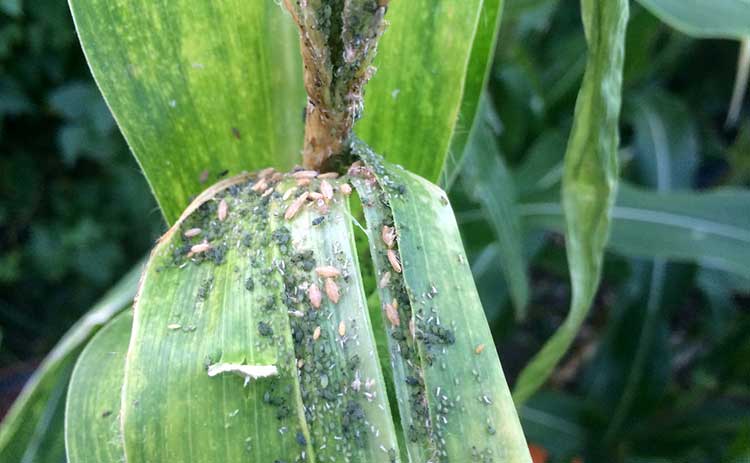Corn Leafhoppers Can Make Hugh Difference in Corn Yields

We have commented many times over the last few months about problems caused by corn leafhoppers in Brazil. The technical director for C. Vale Cooperative in the state of Parana recently estimated that the correct management of corn leafhoppers could make the difference between a yield of 20 sacks per hectare (19 bu/ac) and 180 sacks per hectare (172 bu/ac).
The weather for the 2022 safrinha corn in Parana was basically ideal and the corn yields should have been very high, but that was not the case for many farmers. Farmers who recorded the lowest yields also recorded the most severe outbreak of corn leafhoppers. Farmers who recorded the highest corn yields also managed to adequately control the corn leafhoppers.
The insect sucks plant juices, but by itself, it does not cause much harm to corn plants. The problem is that it transmits a virus that causes corn stunting. The virus weakens the plant resulting in excessive lodging and low yields.
Farmers that planted a corn hybrid sensitive to the stunting virus and did not adequately control the leafhoppers, had corn yields in the range of 20-25 sacks per hectare (19 to 24 bu/ac). Farmers who planted a hybrid more tolerant to the stunting virus and adequately controlled the pest, had corn yields in the range of 140 to 180 sacks per hectare (133 to 172 bu/ac).
Since the pest is new to Brazil, researchers and farmers are still learning the best way to control the insect. Research indicates that the best way to minimize losses from corn leafhoppers is to plant hybrids more tolerant to the stunting virus, control the pest with chemical or biological agents, plant the corn in a more concentrated window, and eliminate all volunteer corn along the edges of fields and in soybean fields.
The insect can easily travel long distances from field to field and it generally migrates from more mature corn to less mature corn. One of the problems in 2022 was that the safrinha corn in Parana was planted from January 5th to March 20th, so there was always less mature corn for the insect to migrate to. Additionally, farmers in Parana plant two corn crops with the first crop generally planted in September and the safrinha crop planted after the soybeans are harvested. So, there can be corn growing in the state for as much as ten months of the year.
Before researchers and farmers understood the damage caused by corn leafhoppers, a lot of the damage caused by the insect was attributed to problems with drought or frost because it was hard to differentiate what caused the problem. That was not the case in 2021/22. The weather was good during the 2021/22 growing season and there was no significant drought or frost damage. Therefore, the true extent of the damage caused by the leafhoppers was abundantly clear during the 2021/22 growing season.
The Soybean and Corn Producers Association of Mato Grosso (Aprosoja/MT) has also expressed concerns about corn leafhoppers. They are now recommending to farmers in Mato Grosso that they do not plant a first crop of corn in September or October and only plant safrinha corn in January or February in order to reduce the overall time when corn is growing in the state. They also emphasize the need to eliminate any volunteer corn plants during the off-season.
Brazilian researchers and farmers are scrambling to identify the best way to control this new pest.
Read also
Wheat in Southern Brazil Impacted by Dry Weather and Frosts
Oilseed Industry. Leaders and Strategies in the Times of a Great Change
Black Sea & Danube Region: Oilseed and Vegoil Markets Within Ongoing Transfor...
Serbia. The drought will cause extremely high losses for farmers this year
2023/24 Safrinha Corn in Brazil 91% Harvested
Write to us
Our manager will contact you soon



